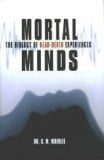 Mortal Minds: The Biology of Near Death Experiences
Mortal Minds: The Biology of Near Death Experiences
by G.M. Woerlee
De Tijdstroom, 25 Euros, ISBN 90 5898 057 X
Gerry Woerlee is an anaesthesiologist with many years of clinical experience. He has written an ambitious book in which he tries to answer the following three questions: What is death? What do people experience as they die? Is there life after death? In attempting to answer these questions, he considers a range of issues and phenomena that will interest readers of The Skeptic. These include the concept of the soul and the properties claimed for it, alleged paranormal abilities, human auras, the out-of-body experience, and the near-death experience.
Along the way, Woerlee offers some novel explanations for many of the phenomena he discusses, many of which are open to empirical testing. To give but one example, he offers a new explanation of the experience of passing down a dark tunnel towards a bright light, commonly reported as part of the near-death experience. Woerlee argues that this experience is best explained in terms of the effects of oxygen starvation upon the functioning of the visual system, and in particular that it is a direct consequence of the differences in blood supply to central vs. peripheral areas of the retina. In other words, he considers the tunnel experience to be primarily an effect arising at the level of the retina rather than an effect due to abnormal functioning at the cortical level as argued by Blackmore (e.g., 1993). Clearly, the two theoretical positions make different predictions regarding the possibility of the tunnel experience occurring in individuals with different types of blindness. Blackmore’s theory would predict that typical tunnel experiences, could occur in individuals with damaged retinas whereas Woerlee’s would not. It would be of considerable interest to see which account (if either) is favoured by the currently available data on NDEs in the blind.
In case you were wondering, Woerlee concludes that true death occurs when the brainstem ceases to function; that the experiences of dying, for most people, are based upon the effects of oxygen starvation to the brain; and that, sadly, there is no life after death. Overall, this is an interesting and provocative book that will provide much food for thought on some of the most profound issues that we all must face.
Reference
Blackmore, S. (1993). Dying to Live: Science and the Near-death Experience. London: Grafton.
Christopher C. French

